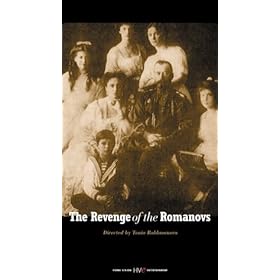The name Alexandra pops up infrequently throughout the Romanov family tree, but with it comes misfortune to almost every bearer of that name.
T

he youngest unfortunate Alexandra was the eldest child of Alexander II and his wife Maria, Alexandra Alexandrovna. Born in 1842, she was a favorite of her father and mother. But Alexandra died at age six of meningitis, leaving her parents devastated.

An even earlier unlucky Alexandra was Alexandra Pavlovna, aunt to Alexander II and daughter of Paul I (Catherine the Great's son). She was first heartbroken over an almost-engagement to the King of Sweden that fell through when he discovered a clause in the marriage contract stating Alexandra would retain her Orthodox faith. She finally married Archduke Joseph of Austria, a union that would prove both short-lived and unhappy. Alexandra Pavlovna died when she was only 17 years old of childbed fever; her baby, a girl named Alexandrine also died.

Alexandra Nicholaevna was a niece to Alexandra Pavlovna and the sister to Alexander II. When she met Prince Frederick "Fritz" of Hesse, a prospective bridegroom for her older sister, Olga, the couple immediately fell in love. They were allowed to marry in 1844, but Alexandra soon became ill with tuberculosis. To make matters worse, she also found out she was pregnant. She eventually went into labor three months premature and gave birth to a son, Wilhelm. Both mother and baby soon died.

Grand Duchess Alexandra Georgievna was actually born a princess of Greece and Denmark, and is a maternal aunt of Prince Philip, Queen Elizabeth II's husband. When Alexandra was 19, she married Grand Duke Paul Alexandrovich, a son of Alexander II. At the end of her second pregnancy, Alexandra was walking with a friend along the Moskva River and jumped from the bank into a boat anchored along the shore. She fell as she landed, and collapsed the next day in tremendous pain. She eventually gave birth to a son, Dmitri Pavlovich, but died soon after. Miraculously, her son, born during the seventh month of pregnancy, survived, thanks to his uncle, Grand Duke Sergei Alexandrovich, the brother of Alexander III. Paul was so grief-stricken, he tried to leap into Alexandra's coffin as it was lowered into the ground. Dmitri and his older sister Maria were raised mostly by their uncle Sergei and his wife Elizabeth Feodorovna (also a sister to the tsaritsa Alexandra), which was a comfort to the couple, who had never been able to have children themselves. Paul eventually remarried morganatically.

Perhaps the only fortunate Alexandra was Alexandra Iosifovna, wife of Konstantin Nicholayevich, brother to Alexander II. She was born Alexandra Friederike Henriette of Saxe-Altenberg. It is said she looked so much like Alexandra Nicholaevna, her husband's late sister, that her mother-in-law burst into tears upon meeting her. She and Konstantin would eventually have six children, but the happiness they had initially started with did not last. While her husband was unfaithful to her (as was so common in those days), she lived to be 80, dying in 1911, truly one of the last of the Old Order.
But it would be the tsaritsa who was the last Alexandra. As each of her daughter's names were announced, many in England wondered why none were named for their mother. Margaret Eagar explained the name was considered unlucky by the family.
And of course we know of the fate of the last Alexandra, sadly another unfortunate story.
Thanks to Wikipedia and "Romanov Autumn" by Charotte Zeepvat for information and photographs of these Alexandras!
 Today is the anniversary of the death of Princess Irina Alexandrovna, the daughter of Alexander Mikhailovich and Grand Duchess Ksenia (or as is more commonly written, Xenia) Alexandrovna, Nicholas's sister.
Today is the anniversary of the death of Princess Irina Alexandrovna, the daughter of Alexander Mikhailovich and Grand Duchess Ksenia (or as is more commonly written, Xenia) Alexandrovna, Nicholas's sister.



















